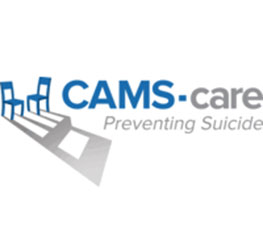The professional home for health service psychologists.
Join a community of 15,000 psychologists and trainees.
Learn it today. Apply it tomorrow.
Connecting you to what you need in your career.
Making a difference.
Weissbrod, C. S. & Colangelo, A. (2020). Understanding and Treating Social Anxiety in Female Adolescents. Journal of Health Service Psychology, 46(3). https://doi.org/10.1007/s42843-020-00008-z
Social anxiety is an intense discomfort and self-consciousness about potential negative evaluations from others or the possibility of embarrassing oneself. The incidence of social anxiety rises in adolescent girls compared to boys (11.2% versus 7.0%). Learning to take healthy risks, developing confidence, and gaining exposure to anxiety-generating stimuli are important. Self-acceptance training, mindfulness training, and reversing of automatic negative interpretive biases are useful interventions. Such techniques are illustrated and described.
Access continuing education course on CE.NationalRegister.org
Andreoni, J., Girolamo, A. D., List, J. A., Mackevicius, C., & Samek, A. (2019). Risk preferences of children and adolescents in relation to gender, cognitive skills, soft skills, and executive functions. Journal of Economic Behavior and Organization, https://doi.org/10.1016/j.jebo.2019.05.002.
Beutel, A. M. & Johnson, M. K. (2004). Gender and prosocial values during adolescence: A research note. The Sociological Quarterly, 45(2), 379-393.
Blumenthal, H., Leen-Feldner, E. W., Badour, C. L., Trainor, C. D., & Babson, K. A. (2014). Pubertal maturation and cortisol level in response to a novel social environment among female adolescents. Journal of Adolescence, 37(6), 893-900.
Chodorow, N. J. (1978). The reproduction of mothering. University of California Press, Berkeley, California.
Ciciolla, L., Curlee, A. S., Karageorge, J., & Luthar, S. S. (2017). When mothers and fathers are seen as disproportionately valuing achievements: Implications for adjustment among upper middle class youth. J Youth Adolescence, 46, 1057-1075.
Dinnerstein, D. (1976). The mermaid and the minotaur: Sexual arrangements and human malaise. New York: Harper and Row
Ebrahiminejad, S., Poursharifi, H., Roodsari, A.B., Zeinodini, Z., and Noorbakhsh, S. (2016). The effectiveness of mindfulness-based cognitive therapy on Iranian female adolescents suffering from social anxiety. Iranian Red Crescent Medical Journal, 18(11), e25116.
Farrell, L. J., Ollendick, T. H., & Muris, P. (Eds.) (2019). Innovations in CBT for Childhood Anxiety, OCD and PTSD. Cambridge University Press.
Fulweiler, B. & John, R. M. (2018). Mind and body practices in the treatment of adolescent anxiety. The Nurse Practitioner, 43(8), 36-43.
Gilligan, C. (1982). In a different voice: Psychological theory and women’s development. Cambridge, MA: Harvard University Press.
Halldorsson, B. & Creswell, C. (2017). Social anxiety in pre-adolescent children: What do we know about maintenance? Behaviour Research and Therapy, 99, 19-36.
Kley, H., Tuschen-Caffier, B., & Heinrichs, N. (2012). Safety behaviors, self-focused attention and negative thinking in children with social anxiety disorder, socially anxious and non-anxious children. Journal of Behavioral Therapy and Experimental Psychiatry, 43(1), 548-555.
Kline, B. E. & Short, E. B. (1991). Changes in emotional resilience: Gifted adolescent females. Roeper Review, 13(3).
Kuckertz J. M., Najmi S., Baer K., Amir N. (2019). Refining the Analysis of Mechanism-Outcome Relationships for Anxiety Treatment: A Preliminary Investigation Using Mixed Models. Behavior Modification.
Lloyd, J. E. V., Walsh, J., & Yailagh, M. S. (2005). Sex differences in performance attributions, self-efficacy, and achievement in mathematics: If I’m so smart, why don’t I know it? Canadian Journal of Education, 28(3), 384-408.
Meece, J. L., Glienke, B. B., & Burg, S. (2006). Gender and motivation. Journal of School Psychology, 44(5), 351-373.
Merikangas, K. R., He, J., Burstein, M., Swanson, S. A., Avenevoli, S., Cui, L., Benjet, C., Georgiades, K., & Swendesen, J. (2010). Lifetime prevalence of mental disorders in U.S. adolescents: Results from the National Comorbidity Survey Replication – Adolescent Supplement (NCS-A). Journal of the American Academy of Child & Adolescent Psychiatry, 49(10), 980-989.
Kessler, R. C. (2017). National Comorbidity Survey: Adolescent Supplement (NCS-A), 2001-2004. Ann Arbor, MI: Inter-university Consortium for Political and Social Research [distributor], 2017-01-18. https://doi.org/10.3886/ICPSR28581.v6.
Leaper, C. & Friedman, C. K. (2007). The socialization of gender. In J. E. Grusec & P. D. Hastings (Eds.), Handbook of socialization: Theory and research (561-587). Guildford Press.
Maric, M., Willard, C., Wrzesien, M., and Bögels, S. M. (2019). Innovations in the treatment of childhood anxiety disorders: Mindfulness and self-compassion approaches. In L. J. Farrell, T. H. Ollendick, & P. Muris, (Eds.). Innovations in CBT for Childhood Anxiety, OCD and PTSD. Cambridge University Press.
GoodTherapy. (2018, June 19). Mindfulness-Based Interventions. https://www.goodtherapy.org/learn-about-therapy/types/mindfulness-based-interventions
Greater Good Science Center. (n.d). Mindful Breathing. https://ggia.berkeley.edu/practice/mindful_breathing
Neff, K. D. (2003). Self-compassion: An alternative conceptualization of a healthy attitude toward oneself. Self and Identity, 2(2), 85-101.
Neff, K. D. & McGehee, P. (2010). Self-compassion and psychological resilience among adolescents and young adults. Self and Identity, 9(3), 225-240.
Perleth, C. & Heller, K. A. (1994). The Munich longitudinal study of giftedness. In R. F. Subotnik & K. D. Arnold (Eds.), Creativity research. Beyond Termah: Contemporary longitudinal studies of giftedness and talent (p. 77-114). Ablex Publishing.
Pomerantz, E. M., Altermatt, E. R., & Saxon, J. L. (2002). Making the grade but feeling distressed: Gender differences in academic performance and internal distress. Journal of Educational Psychology, 94(2), 396-404.
Proeve, M., Anton, R., & Kenny, M. (2018). Effects of mindfulness-based cognitive therapy on shame, self-compassion and psychological distress in anxious and depressed patients: A pilot study. Psychology and Psychotherapy: Theory, Research and Practice, 91(4), 434-449.
Radtke, S. R., Strege, M. V., & Ollendick, T. H. (2020). Exposure therapy for children and adolescents with social anxiety disorder. In T. S. Peris, E. A. Storch, & J. F. McGuire (Eds.). Exposure therapy for children with anxiety and OCD: Clinician’s guide to integrated treatment (pp. 193-219). Academic Press.
Ruble, D. N., Martin, C., & Berenbaum, S. (2006). Gender development. In W. Damon & R. M. Lerner (Series. Eds.) & N. Eisenberg (Vol. Ed.), Handbook of child psychology: Vol. 3. Social, emotional, and personality development (6th ed., pp. 858 – 932). New York: Wiley.
Schoenleber, M. & Gratz, K. L. (2018). Self-acceptance group therapy: A transdiagnostic,cognitive-behavioral treatment for shame. Cognitive and Behavioral Practice, 25(1), 75-86.
Slaughter, A. (2012, July/August). Why women still can’t have it all. The Atlantic. https://www.theatlantic.com/magazine/archive/2012/07/why-women-still-cant-have-it-all/309020/
Settipani, C. A., & Kendall, P. C. (2013). Social functioning in youth with anxiety disorders: Association with anxiety severity and outcomes from cognitive-behavioral therapy. Child Psychiatry and Human Development, 44(1), 1-18.
Shipman, C., Kay, K., & Riley, J. (2018a, October 1). The confidence gap for girls: 5 tips for parents of tween and teen girls. The New York Times. https://www.nytimes.com/2018/10/01/well/family/confidence-gap-teen-girls-tips-parents.html
Shipman, C., Kay, K., & Riley, J. (2018b, September 20). How puberty kills girls’ confidence. The Atlantic. https://www.theatlantic.com/family/archive/2018/09/puberty-girls-confidence/563804/
Simmons, R. (2018). Enough as she is: How to help girls move beyond impossible standards of success to live healthy, happy and fulfilling lives. Harper Collins, New York, New York.
Somerville, L. H. (2013). Special issue on the teenage brain: Sensitivity to social evaluation. Curr Dir Psychol Sci, 22(2), 121-127.
Spence, S. H., Donovan, C., & Brechman-Toussaint, M. (1999). Social skills, social outcomes, and cognitive features of childhood social phobia. Journal of Abnormal Psychology, 108(2), 211-221.
Spence, S. H. & Rapee, R. M. (2016). The etiology of social anxiety disorder: An evidence-based model. Behaviour Research and Therapy, 86, 50-67.
Vassilopoulos, S. P. & Brouzos, A. (2016). Cognitive bias modification of interpretations in children: Processing information about ambiguous social events in a duo. Journal of Child and Family Studies, 25, 299-307.
Vassilopoulos, S. P., Moberly, N. J., & Douratsou, K. (2012). Social anxiety and the interaction of imagery and interpretations in children: An experimental test of the combined cognitive biases hypothesis. Cognitive Therapy Research, 36, 548-559.
Vine, M., Stoep, A. V., Bell, J., Rhew, I. C., Gudmundsen, G., & McCauley, E. (2012). Association between household and neighborhood income and anxiety symptoms in young adolescents. Depression and Anxiety, 29(9), 824-832.
Wadlinger, H. A. & Isaacowitz, D. M. (2011). Fixing our focus: Training attention to regulate emotion. Personality and Social Psychology Review, 15(1), 75-102.
Wong, C. (2019). How to practice mindfulness meditation. Verywell Mind. https://www.verywellmind.com/mindfulness-meditation-88369
Wong, Q. J. J., & Rapee, R. M. (2016). The aetiology and maintenance of social anxiety disorder: A synthesis of complementary theoretical models and formulation of a new integrated model. Journal of Affective Disorders, 203, 84-100.
Copyright © 2025 All rights reserved. National Register of Health Service Psychologists









